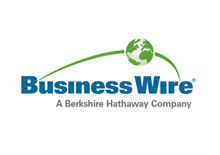Global Catalog Peptides Market Expected to Grow with a CAGR of 5.8% During the Forecast Period, 2019-2024 - ResearchAndMarkets.com
The "Catalog Peptides Market Research Report: By Type, Application, End - User, Geographical Outlook - Global Industry Size, Share Analysis and Growth Forecast to 2024" report has been added to ResearchAndMarkets.com's offering.
The catalog peptides market is expected to grow to $332.1 million by 2024 at a CAGR of 5.8% during the forecast period (2019-2024), from $238.4 million in 2018.
The increasing funding in protein-based research, technical advancements, rising chronic disease burden, and growing research activities to develop innovative therapies are the major drivers of the market. A short chain of amino acids, in which the amino acids are linked together by peptide bonds, constitutes a peptide. Catalog peptides are off-the-shelf products, which are available with manufacturers for use in biochemistry, molecular medicine, and pharmacology.
The catalog peptides market is observing growth due to advancements in technology that help in the cost-effective manufacturing of peptides. Previously, peptides were synthesized from natural sources, such as adrenocorticotropic hormone (ACTH) derived from the porcine or bovine pituitary and insulin from bovine or canine pancreas. The production of naturally synthesized peptides is not only time consuming, but also has low yield and is much more cost-intensive. With technical advancements, peptides, such as octreotide, oxytocin, leuprorelin, and vasopressin, can be synthesized using solid-phase synthesis.
The subdivisions of the catalog peptides market, based on type, are G protein-coupled receptor (GPCR), calcitonin gene-related, anti-microbial, caspase-related, tau, amyloid, amylin, adrenomedullin, and cyclic. Cyclic proteins contributed about 11.3% of the total revenue to the market in 2018. These peptides have diverse biological activities, such as immunosuppressive, antibacterial, and anti-tumor activities, which contributed in their significant market share. Owing to their wide-ranging application, cyclic peptides are predicted to be the leader in revenue generation during the forecast period too.
Asia-Pacific (APAC) can be the most lucrative region for the catalog peptides market to maximize revenue. A 2017 United Nations factsheet mentioned that the population above the age of 60 would double by 2050 across the globe. With the rising prevalence of chronic diseases, the demand for novel therapies is increasing for the proper management of such diseases. As the APAC region accounts for 60.0% of the world's population, the demand for catalog peptides is expected to be high here. Further, low manufacturing costs and lenient regulations are inviting foreign investments.
Hence, the market for catalog peptides is slated to advance in the forecast period due to the rising chronic disease prevalence, increasing research activities, and technical advancements.
Key Topics Covered:
Chapter 1. Research Background
1.1 Research Objectives
1.2 Market Definition
1.3 Research Scope
1.4 Key Stakeholders
Chapter 2. Research Methodology
2.1 Secondary Research
2.2 Primary Research
2.2.1 Breakdown of Primary Research Respondents
2.2.1.1 By region
2.2.1.2 By industry participant
2.2.1.3 By company type
2.3 Market Size Estimation
2.4 Data Triangulation
2.5 Assumptions for the Study
Chapter 3. Executive Summary
Chapter 4. Introduction
4.1 Definition of Market Segments
4.2 Market Dynamics
4.3 Porter's Five Forces Analysis
4.4 Regulatory Scenario for Catalog Peptides
4.5 Benefits of Catalog Peptides
Chapter 5. Global Market Size and Forecast
5.1 By Type
5.2 By Application
5.3 By End User
5.4 By Region
Chapter 6. North America Market Size and Forecast
6.1 By Type
6.2 By Application
6.3 By End User
6.4 By Country
Chapter 7. Europe Market Size and Forecast
7.1 By Type
7.2 By Application
7.3 By End User
7.4 By Country
Chapter 8. APAC Market Size and Forecast
8.1 By Type
8.2 By Application
8.3 By End User
8.4 By Country
Chapter 9. LATAM Market Size and Forecast
9.1 By Type
9.2 By Application
9.3 By End User
9.4 By Country
Chapter 10. MEA Market Size and Forecast
10.1 By Type
10.2 By Application
10.3 By End User
10.4 By Country
Chapter 11. Competitive Landscape
11.1 Key Players and their Product Offerings
11.2 Ranking of the Key Players
11.3 Strategic Developments of the Key Players
Chapter 12. Company Profiles
12.1 PolyPeptide Group
12.2 CSBio
12.3 GL Biochem (Shanghai) Ltd.
12.4 CPC Scientific Inc.
12.5 Auspep Pty Ltd.
12.6 Peptides International Inc.
12.7 Applied Biological Materials (ABM) Inc.
12.8 Biomatik Corporation
12.9 Bio-Synthesis Inc.
12.10 Thermo Fisher Scientific Inc.
12.11 GenScript Biotech Corporation
12.12 Bachem AG
12.13 JPT Peptide Technologies GmbH
12.14 Advanced ChemTech
12.15 LifeTein LLC
12.16 Kaneka Eurogentec S.A.
12.17 Elim Biopharm Inc.
12.18 Creative Peptides
12.19 Abbiotec Inc.
12.20 NovoPro Bioscience Inc.
12.21 KareBay Biochem Inc.
12.22 Ontores Biotechnologies Inc.
12.23 Severn Biotech Ltd.
12.24 Genway Biotech Inc.
12.25 Kaneka Corporation
12.26 New England Peptide Inc.
12.27 AnaSpec Inc.
12.28 AAPPTec LLC
12.29 Merck KGaA
For more information about this report visit https://www.researchandmarkets.com/r/iouwem
View source version on businesswire.com: https://www.businesswire.com/news/home/20200204005614/en/



